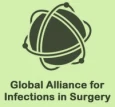Sepsis is a burdensome condition worldwide in terms of morbidity, mortality and financial cost to health systems. Sepsis is associated with hospital mortality of 25%–30% globally, which increases to 40%–50% in patients with complications and in lower-income countries.
Sepsis is one of the most prevalent but misdiagnosed, deadly diseases and has been established as a global priority by the World Health Assembly (WHA), the decision-making body of the World Health Organization (WHO). Its high mortality and financial impact have been well described, and early recognition is critical as timely intervention reduces mortality. Despite its significant global impact, awareness of sepsis has been historically poor.
Sepsis is a multifaceted host response to an infecting pathogen that may be significantly amplified by endogenous factors. If left untreated, it may lead to the functional impairment of one or more vital organs or systems. Although big steps forward have been made, the pathophysiological mechanisms for organ dysfunction are not entirely known but it has become apparent that infection triggers a much more complex, variable, and prolonged host response, involving early activation of both pro- and anti-inflammatory responses.
Sepsis has variable clinical presentations depending on the initial site of infection, the causative organism, the pattern of acute organ dysfunction and the underlying health status of the patient. However, in recent years, it has become clear that the most important aspect of the management of patients with sepsis is early recognition so that administration of antibiotics, source control measures and effective resuscitation strategies can be started as soon as possible after onset. To enable early interventions being effective, the diagnosis must be made as early as possible and treatment must be started early. The ability to identify septic patients who are at high risk for subsequent organ dysfunction and mortality, starting from pre-hospital care and emergency department, is crucial since timely recognition and appropriate, effective treatment substantially improves survival. This highlights the need for all healthcare workers to be vigilant about sepsis, so that the diagnosis can be made as early as possible. Early antibiotics, timely source control and prompt fluid resuscitation support of vital organ function are the cornerstones for the treatment of patients with sepsis. Although updated sepsis/septic shock guidelines and bundles recommending early diagnosis and prompt institution of therapy aiming to prevent progression to organ(s) dysfunction(s), this syndrome continues to be a challenge worldwide.
The disease burden of sepsis is a global issue. However a precise estimate of the global epidemiological burden of sepsis is difficult to ascertain. Although the rate of mortality related to sepsis has been declined in high income countries, the mortality of sepsis in low and middle income countries, which occupy most of the world’s population, remains high or may be rendered such due to the lack of epidemiological data.
Sepsis is a burdensome condition worldwide in terms of morbidity, mortality and financial cost to health systems. Its global nature calls for a global response, both in the geographic sense and across the whole range of sectors involved. There is urgent need to implement global strategies to combat sepsis from a global perspective.
Be vigilant about sepsis
VIDEO
YouTube

